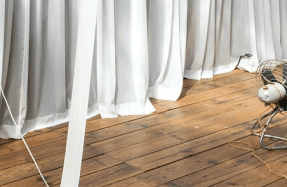

Conversing with Kidlat Tahimik was as surreal as watching his movies. His narratives unfold in different layers, steadily unraveling stories and perspectives, giving insight into his practice and the world he examines. He described his film practice and aversion to scripts, shared his life story and how his experiences translated into his works, offered his perspective of taking time and letting things ferment like tapuy [rice wine], and put forward Indigenous beliefs as a key to understanding our culture and attaining happiness. “I think of myself mainly as a storyteller; it’s what I tell people. Forget any awards you attach to Kidlat Tahimik, that I got a National Artist Award in Cinema. Yun nakakahon yun [Those things are boxed away]. I feel for the last two and a half decades I’ve been doing art installation and performance and film. And even architecture… I built all these structures without an architect using recycled materials and kung anong [whatever] inspiration at the moment. It’s like my scriptless films—architecture without blueprints. And maybe my whole life is like that: nothing I guess has become a solid structure. I tear up my MBA, and suddenly I become a hippie and I’m doing crazy films.”
It has been 45 years since Tahimik’s breakthrough film was released in 1977 and went on to win the International Film Critic’s Prize at the Berlin Film Festival. He made the semi-autobiographical film about his journey from the barrios to foreign lands and back again after he famously tore up his MBA diploma from the Wharton Business School, ditched the job he started in 1968 at the Organization for Economic Cooperation and Development in Paris, and decided to pursue an artistic career. He even changed his name from Eric de Guia to Kidlat Tahimik to fit this persona (it means “silent






